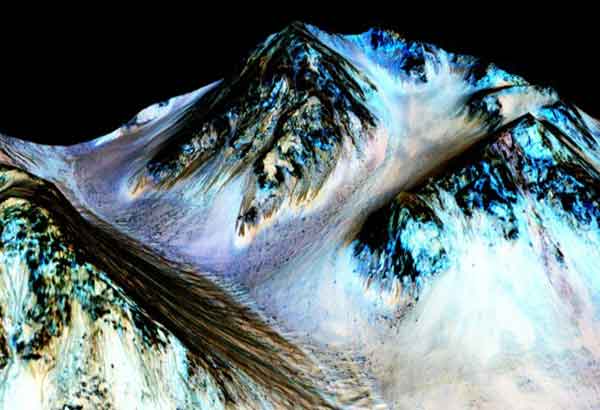Mars attacks

Mars is a graveyard of spacecrafts. Missions to the red planet have a high failure rate — roughly two thirds of all the ones sent out. It is our closest neighbor that has a likely chance of being made habitable, so space agencies have sent more missions to it than any other planet. This spectacle of thwarted missions involves a coterie of fiascos such as busted batteries and solar panels (Mariner 3, 1964), surface crashes (Mars 2 rover, 1971), lost contact (Mars Observer, 1992), and failed orbits (Fobos-Grunt, 2011).
Some have even invoked spectral forces as causes preventing the success of these attempts, as Ian O’Neill wrote in Universe Today in 2008 — three years before the success of the Curiosity rover. “Looking over the past 48 years of Mars exploration, it makes for sad reading. A failed mission here, a ‘lost’ mission there, with some unknowns thrown in for good measure. It would seem that mankind’s efforts to send robots to Mars have been thwarted by bad luck and strange mysteries. Is there some kind of Red Planet Triangle (much like the Bermuda Triangle), perhaps with its corners pointing to Mars, Phobos and Deimos? Is the Galactic Ghoul really out there devouring billions of dollars-worth of hardware?”
Doomed films
Films set in Mars are also doomed. From Mission to Mars, Red Planet to John Carter, Hollywood hasn’t had a success since Total Recall. Tim Burton’s A-list fare Mars Attacks wasn’t even spared — it was tepidly received by critics and bombed in the box office. With the exception of Paul Verhoeven’s Schwarzenegger-starrer, Mars-set films are either flubs or critical failures. Will Ridley Scott’s The Martian be an exception to the ‘Mars Curse’?
The events in The Martian are undated, but if we take into consideration the possibility of manned missions, we’re looking at 15 years into the future before we see humans actually landing on Mars. NASA has “vague” plans to send humans to Mars by 2030. Although recent discovery of water on the planet may increase the chance of sending humans to Mars soon, the task is still complex and daunting.
The film, for the sake of engaging audiences, breezes through what is probably a tedious process that involves most missions in space. Travel times are breezed through (total journey from Earth to Mars is estimated from 150 to 300 days), launches have faster timelines, and communication delays are edited (light and radio waves take three to 22 minutes, depending on the proximity, to travel from either planets, so those are actually long ass conversations between Matt Damon’s Mark Watney and NASA). To emphasize the slow trickle of time, days are counted as sequences that take place in the film.
The Martian is smaller in scale compared to the sweeping space opera of Interstellar. It is essentially, Saving Private Ryan in space. The film mostly focuses on the interaction between NASA and Watney — how each side walks the tenuous line of survival: Watney scavenging his remaining resources for food and oxygen as NASA races to send a mission to supply or retrieve him.

Despite the recent discovery of water on the planet, sending humans to Mars still remains a complex and daunting task. NASA
Human drama
It might be set in another planet but the core of the film thrives on human drama. That even in the most insurmountable obstacles — growing food in an inhospitable planet, traversing uncharted terrains, and the crushing loneliness that besets him until rescue arrives — the resilience of the human spirit will triumph. Every decision that NASA has to make hinges on the fact that they might lose mankind’s avatar of hope, awaiting for help 140 million miles away.
Despite the grim prospects — and a probable curse — of sending missions to Mars, or even manned explorations, is it worth it to risk lives and spend billions for the sake of scientific discovery? The Martian author Andy Weir thinks its scale is just like climbing the summit of Mount Everest — that man’s boundless curiosity will eventually take him to the stars. “It’s hard to justify the additional costs and risk. Still, I would like to have humanity able to survive if there’s a catastrophe on earth. It’s not within our technological reach to colonize Mars right now, despite what some groups say, but we can do it eventually,” he told Wired.
* * *
Tweet the author @donutjaucian.















